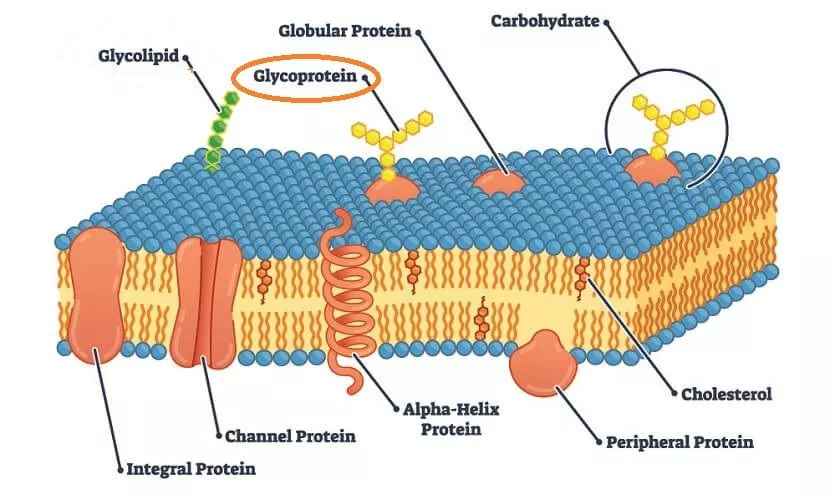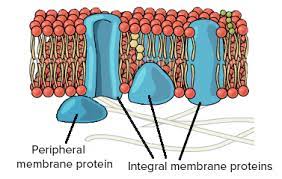Transport in cells
0.0(0)
0.0(0)
New
Card Sorting
1/30
Earn XP
Description and Tags
Study Analytics
Name | Mastery | Learn | Test | Matching | Spaced |
|---|
No study sessions yet.
31 Terms
1
New cards
Definition of diffusion
Movement of molecules or ions from a high concentration to a lower concentration via a net movement until an equilibrium is reached
2
New cards
What causes diffusion?
Random movement of molecules in the external solution
3
New cards
Which forms of transport in cells require energy?
Active Transport; against the gradient (low --> high)
4
New cards
What affects the rate of diffusion?
1) The concentration gradient
2) The distance to travel
3) Surface are of the membrane
4) Thickness of the membrane
5) Temperature
6) Size and lipid solubility of molecule
2) The distance to travel
3) Surface are of the membrane
4) Thickness of the membrane
5) Temperature
6) Size and lipid solubility of molecule
5
New cards
What is Facilitated Diffusion?
The same as diffusion, but requires carrier and channel proteins (DOES NOT REQUIRE ENERGY)
6
New cards
What is Active Transport?
The movement of molecules against the concentration gradient, using energy form respiration, across a membrane, for Na+ and K+
7
New cards
What effect does cyanide have on active transport and why?
Stops it. Cyanide prevents aerobic respiration therefore no ATP is produced. ATP is required for Active Transport.
8
New cards
What is Phagocytosis?
Where a large particle may enter the cell, become enclosed by a membrane to form a vesicle and transported through the cell
9
New cards
What is exocytosis?
Vesicle with material to be secreted fuses with the plasma membrane and secretes the contents
10
New cards
What is endocytosis?
The opposite of exocytosis i.e where a substance transported through the cell in a vesicle to the plasma membrane for secretion. The vesicle fuses with the membrane and forms a gap in the membrane that allows the substance to be secreted
11
New cards
What is pinocytosis?
The movement of liquids across a membrane using vesicles
12
New cards
What is Osmosis?
A particular form of diffusion in which water molecules move down a water potential gradient through a selectively permeable membrane
13
New cards
How does water move in osmosis?
From a higher water potential to a lower one (i.e a more negative one)
14
New cards
What is meant by Isotonic?
Equal concentrations inside and outside the cell solution (equal to water potential)
15
New cards
If a cell is in an external solution that is Hypotonic( high water potential) , where does the water move?
Into the cell
16
New cards
If a cell is in an external solution that is Hypertonic (concentrated, low water potential), where does the water move?
Out of the cell
17
New cards
If a cell is in an external solution that is Isotonic, where does the water move?
In and out of the cell at equal rates (i.e no net movement)
18
New cards
If an animal cell is placed in an external solution that is Hypotonic, what happens to the cell?
It becomes lysed (burst)
19
New cards
If a plant cell is placed in an external solution that is Hypotonic, what happens to the cell?
It becomes turgid (normal in plant cells)
20
New cards
If an animal cell is placed in an external solution that is Hypertonic, what happens to the cell?
It becomes crenated (shrivelled)
21
New cards
If a plant cell is placed in an external solution that is Hypertonic, what happens to the cell?
It becomes plasmolysed
22
New cards
If an animal cell is placed in an external solution that is Isotonic, what happens to the cell?
Nothing, the cell is normal
23
New cards
If a plantcell is placed in an external solution that is Isotonic, what happens to the cell?
Nothing, the cell is normal(placid)
24
New cards
Why do plant cells not burst when in hypotonic solutions?
They have cell walls which are inelastic so can take the pressure of the extra water by creating a resistances to the pressure generated by the swelling of the cyoplasm
25
New cards
What is osmosis a form of?
Diffusion
26
New cards
How does the size of a molecule affect the rate of diffusion through a plasma membrane?
Increase in molecular size decreases the rate of diffusion through the membrane because smaller molecules diffuse faster, have greater kinetic energy and can more easily pass between phospholipid molecules
27
New cards
What do glycoproteins and peripheral proteins function for?
Signaling

28
New cards
What are integral proteins and what do they function for?
Channel proteins and carrier proteins; transport.

29
New cards
What is passive transport?
transport using no ATP, down the gradient (high --> low)
30
New cards
What are the 3 types of passive transport?
Simple diffusion - Facilitated diffusion - Osmosis
31
New cards
Which type of passive transport requires a carrier (transport) protein?
Facilitated diffusion